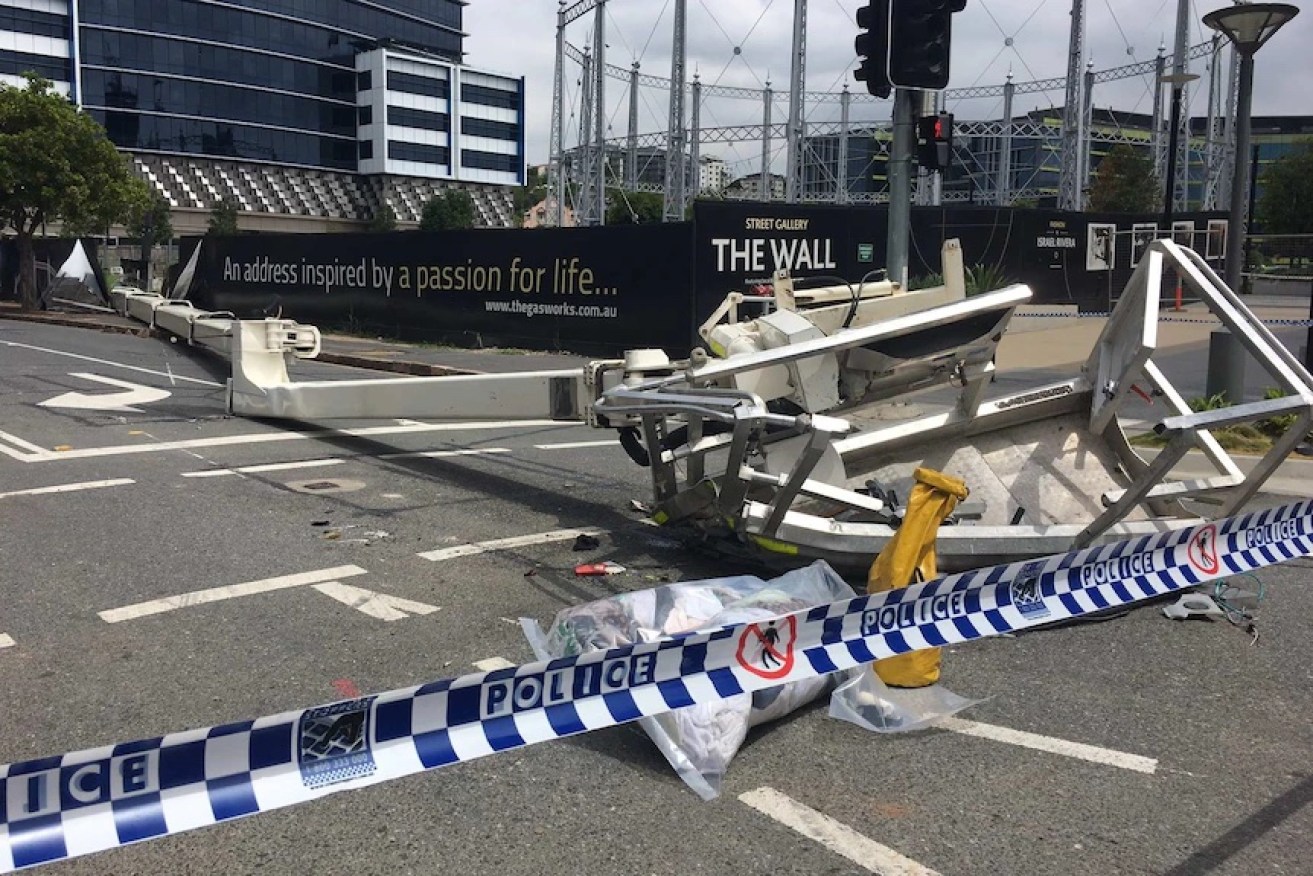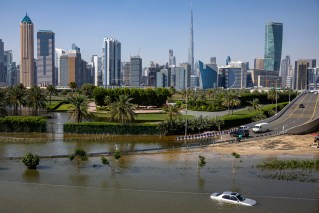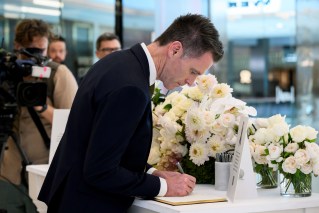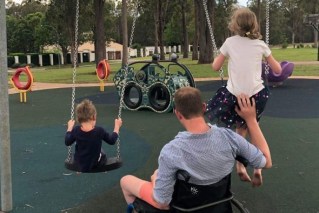Death plunge: Fatal crane collapse reveals ‘serious flaws’ in regulations
A coroner has found a “serious shortfall” in regulations covering the use of cranes and elevated work platforms on potential construction sites after an inquest into the death of a photographer who died after a platform plunged 50 metres to the ground.

The scene of the fatal 2015 crane collapse at Newstead. (Image: ABC)
The professional photographer, who died in 2015 while taking sunset pictures while hoisted on the crane, was an industry leader in the use of drones for shooting from heights.
Christopher Powell and his teenage son were in a crew basket raised from a crane truck taking photos of the sun setting above Brisbane’s Story Bridge when the platform plummeted to the ground.
Both men sustained serious injuries, with Mr Powell dying from his within minutes of the fall.
Recommendations to government in the inquest findings of coroner Donald MacKenzie published on Tuesday aim to prevent such a death happening again.
The recommendations came as Mr MacKenzie found a “hiatus” in regulations around the elevated work platforms (EWP) that resulted in operators setting them up on ground they had a gut feeling was secure.
The inquest heard the case was unusual because from an initial visual inspection, the ground on which the EWP failed looked very stable.
The site had also been used for weeks before by trucks and EWPs, with the ground stability crash attributed to a “pie crust situation” after rain and the use of heavy machinery.
Powell was on the EWP to capture marketing material images replicating the view of the top floor of a yet-to-be constructed apartment block at Newstead in December 2015.
The structure consisted of a 33-tonne body truck fitted with a 70-metre telescopic boom on a turntable with four outrigger legs, each with stabilising pads.
After the men had been hoisted about 50 metres above the ground for about 20 minutes the operator heard a noise and saw a hollow forming around the base of the stabiliser pad.
He radioed the father and son, saying “I have to get you down”, but the leg sunk 1.7 metres in the ground and the EWP began to pivot.
Other legs lifted off the ground, the platform rotated, overturning onto the passenger’s side and the boom crashed through the boundary fence onto a street.
The crew basket crashed down from more than 40 metres onto the road.
Powell was still in the basket with his legs tangled in the safety rails, while son Brendan, 17, had been thrown out, landing a few metres away.
Brendan has resumed a “hybrid normality to his life” after years of rehabilitation, Mr MacKenzie said in his findings.
He found the tragedy occurred because a 33-tonne piece of machinery holding two men almost 50 metres in the air was allowed to operate when no one had any idea of the ground quality.
“This was a serious short-fall in the current regulatory scheme,” he added.
MacKenzie recommended geotechnical reports be obtained before specific EWP machinery is brought onto sites, that an EWP code of practice is established and that EWP operators receive additional training by experts about the identification of hazardous and unsure ground conditions.
The coroner said Powell was an industry leader in the introduction of drone use for photography shoots from the height involved in this tragedy.
Drone technology had advanced since his death, but there would always be a need to raise workers to considerable heights for different applications.
“So the safety of EWP operation in terms of sound ground stability will be ever-present,” MacKenzie added.












